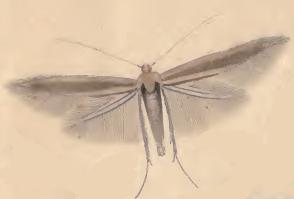
Ceiba pentandra is a tropical tree of the order Malvales and the family Malvaceae, native to Mexico, Central America and the Caribbean, northern South America, and West Africa. A somewhat smaller variety was introduced to South and Southeast Asia, where it is cultivated.

The Malvales are an order of flowering plants. As circumscribed by APG II-system, the order includes about 6000 species within 9 families. The order is placed in the eurosids II, which are part of the eudicots.

Ceiba is a genus of trees in the family Malvaceae, native to tropical and subtropical areas of the Americas and tropical West Africa. Some species can grow to 70 m (230 ft) tall or more, with a straight, largely branchless trunk that culminates in a huge, spreading canopy, and buttress roots that can be taller than a grown person. The best-known, and most widely cultivated, species is Kapok, Ceiba pentandra, one of several trees known as kapok.

The Cyperaceae are a family of graminoid (grass-like), monocotyledonous flowering plants known as sedges. The family is large, with some 5,500 known species described in about 90 genera, the largest being the "true sedges" genus Carex with over 2,000 species.

Bombacaceae were long recognised as a family of flowering plants or Angiospermae. The family name was based on the type genus Bombax. As is true for many botanical names, circumscription and status of the taxon has varied with taxonomic point of view, and currently the preference is to transfer most of the erstwhile family Bombacaceae to the subfamily Bombacoideae within the family Malvaceae in the order Malvales. The rest of the family were transferred to other taxa, notably the new family Durionaceae. Irrespective of current taxonomic status, many of the species originally included in the Bombacaceae are of considerable ecological, historical, horticultural, and economic importance, such as balsa, kapok, baobab and durian.

Bombax is a genus of mainly tropical trees in the mallow family. They are native to western Africa, the Indian subcontinent, Southeast Asia, and the subtropical regions of East Asia and northern Australia. It is distinguished from the genus Ceiba, which has whiter flowers.

Salix pentandra, the bay willow, is a species of willow native to northern Europe and northern Asia. The scientific name refers to the male flowers having five stamens. The English name derives from the resemblance of the leaves to those of the bay laurel; other common names include bay-leaved willow and laurel willow. Its glossy leaves make it more decorative than many other willows, so it is often planted as an ornamental tree.
NVC community W3 is one of the woodland communities in the British National Vegetation Classification system.
Vatica pentandra is a species of plant in the family Dipterocarpaceae. It is a tree endemic to Borneo. It is a critically endangered species threatened by habitat loss.

Coleophora lusciniaepennella is a moth of the family Coleophoridae. It is found in most of Europe, except the Iberian Peninsula, the Mediterranean islands and most of the Balkan Peninsula and Russia. It occurs in forest-steppe biotopes.

Mitella pentandra, or Pectiantia pentandra, is a species of flowering plant in the Saxifrage Family (Saxifragaceae), known by the common names fivestamen miterwort or five-point bishop's cap.
Sedella pentandra is a species of flowering plant in the family Crassulaceae known by the common name Mt. Hamilton mock stonecrop. It is endemic to California, where it grows in the Central Coast Ranges and adjacent sections of the Central Valley and coastline. It often grows on sandstone and serpentine soils. This is an annual herb growing no more than 8 centimeters high. It has small succulent leaves each a few millimeters long. The flowers atop the threadlike stems have fleshy sepals and yellowish petals a few millimeters in length.

Caustis is a genus of rhizomatous sedges. The species, all endemic to Australia, are as follows:

Parque de la Ceiba is a passive park in sector Cuatro Calles of barrio San Antón, Ponce, Puerto Rico. Its centerpiece is the historic Ceiba pentandra, a tree associated with the founding of the city. Now surrounded by the park with the same name, the emblematic 500-year-old Ceiba tree stands on the edge of the Ponce Historic Zone. The park opened in 1984, under the administration of Mayor Jose Dapena Thompson. A sign on the fence that surrounds the tree identifies its species as Ceiba pentandra.

Caustis dioica is a sedge that is native to Western Australia.
Caustis gigas, commonly known as giant twig-rush, is a sedge that is native to Western Australia.
Euura amerinae is a species of sawfly belonging to the family Tenthredinidae. The larvae form galls on bay willow. It was first described by Carl Linnaeus in 1758.
Zaleya pentandra is a prostrate perennial herb of the Aizoaceae family. It is widespread in semi-arid and arid climes and also in woodlands and can adapt to different ecological zones.
Caustis blakei, also known as the koala fern, is a species of rhizomatous sedge in the family Cyperaceae. It is found exclusively in Australia in southeastern Queensland and northeastern New South Wales. It has rigid, smooth stems up to 2 meters with 10 to 28 nodes. It has two subspecies: C. blakei subsp. blakei and C. blakei subsp. macrantha, which was identified by Johnston et al. in 1997. The two subspecies differ in length of spikelets, anthers, and fruit.










